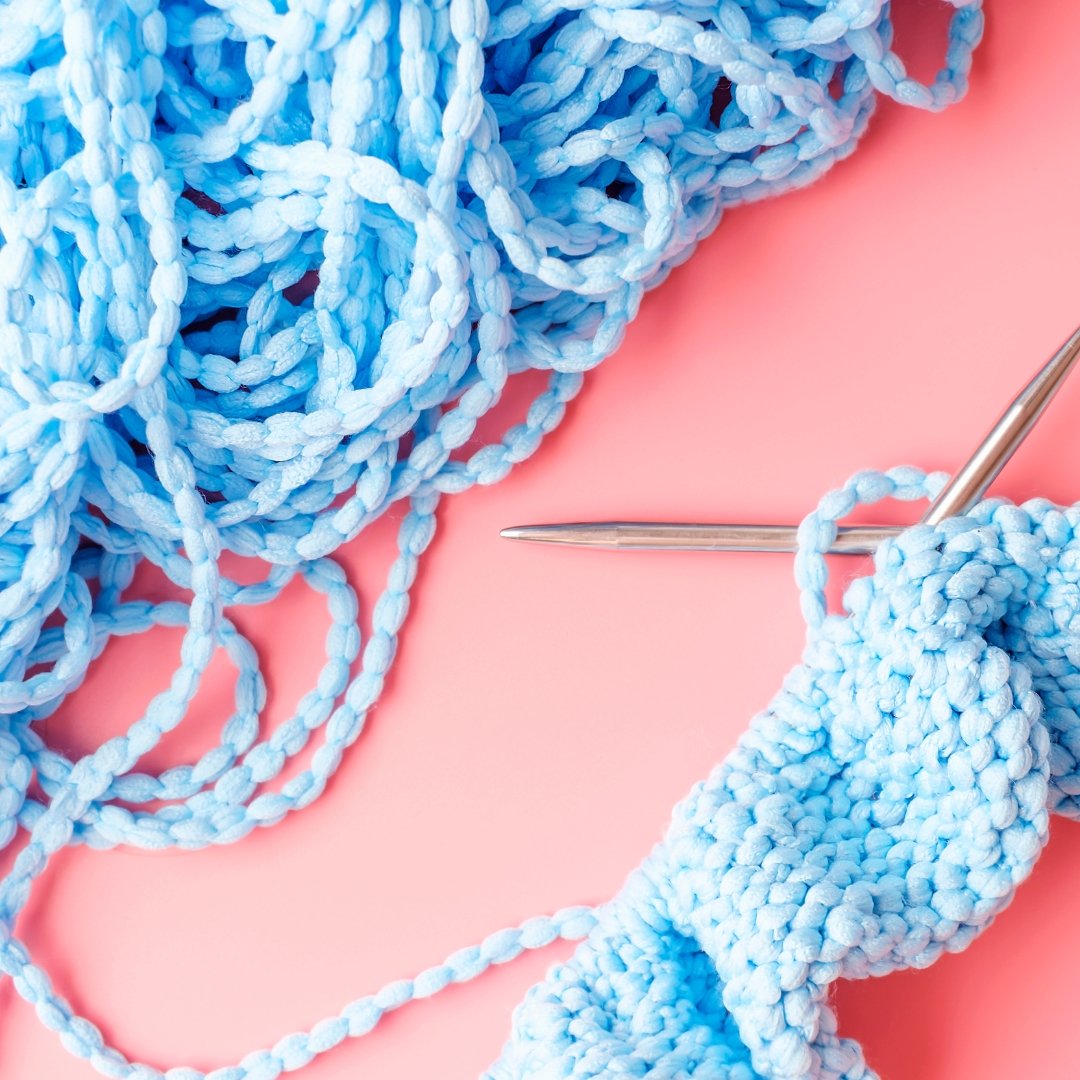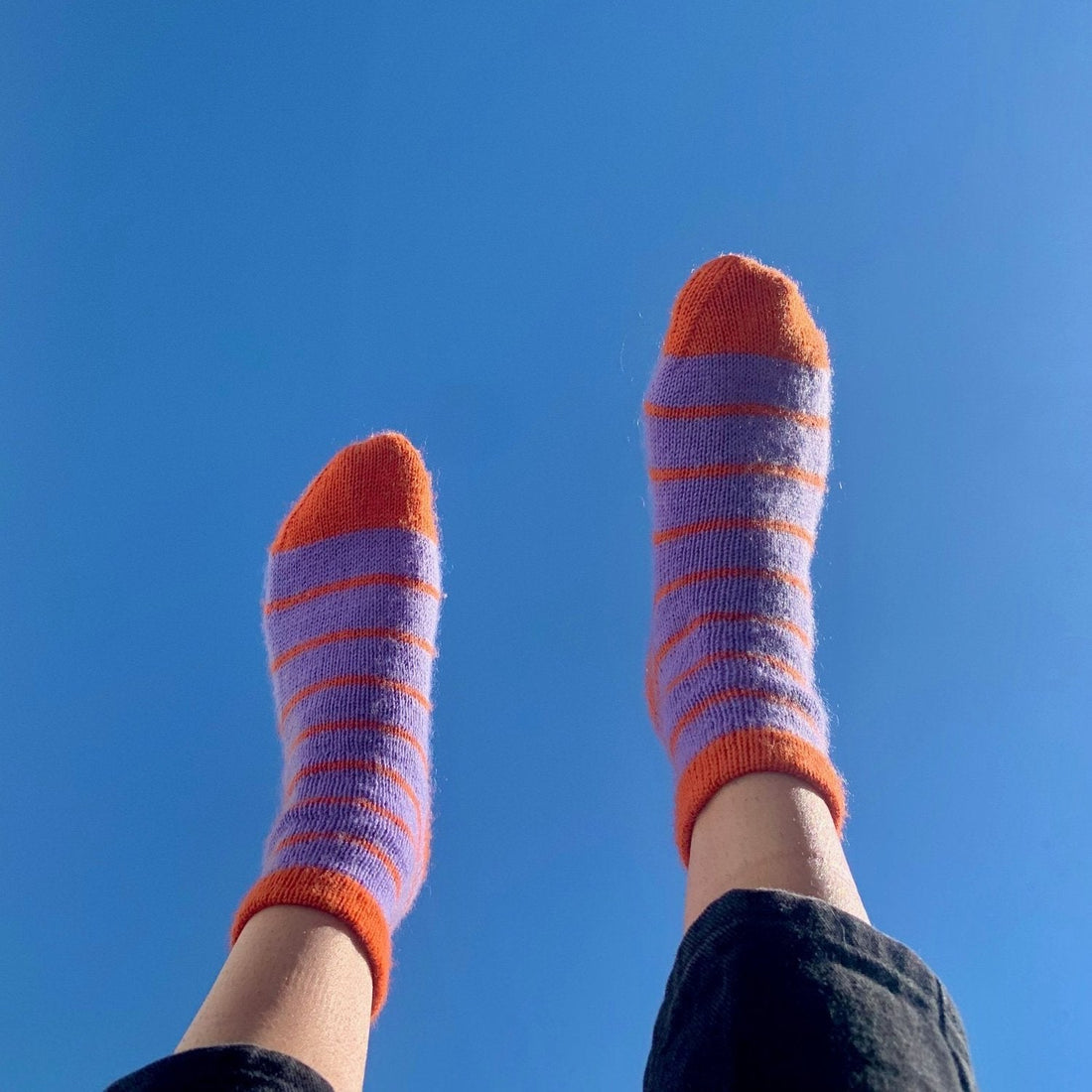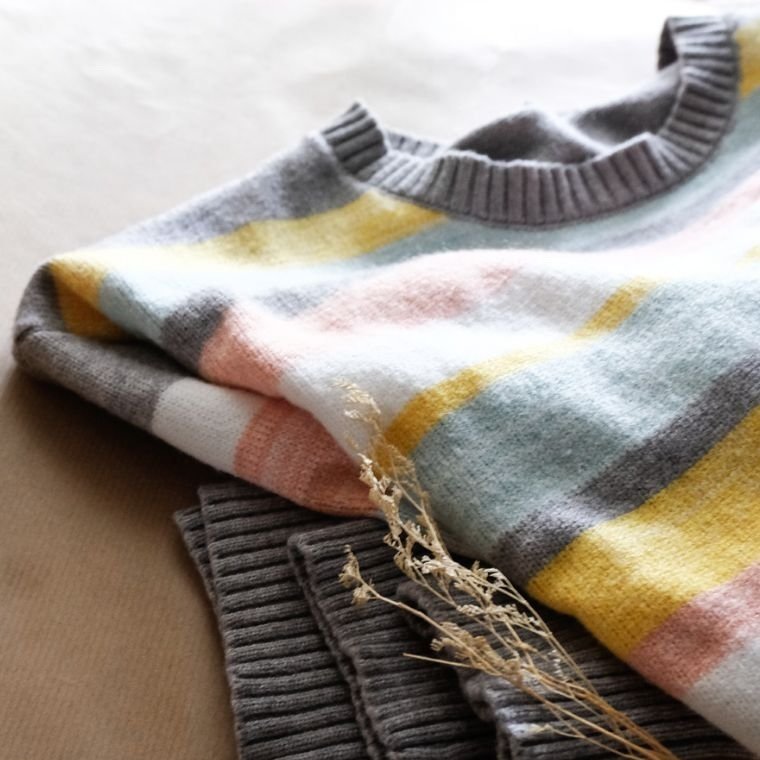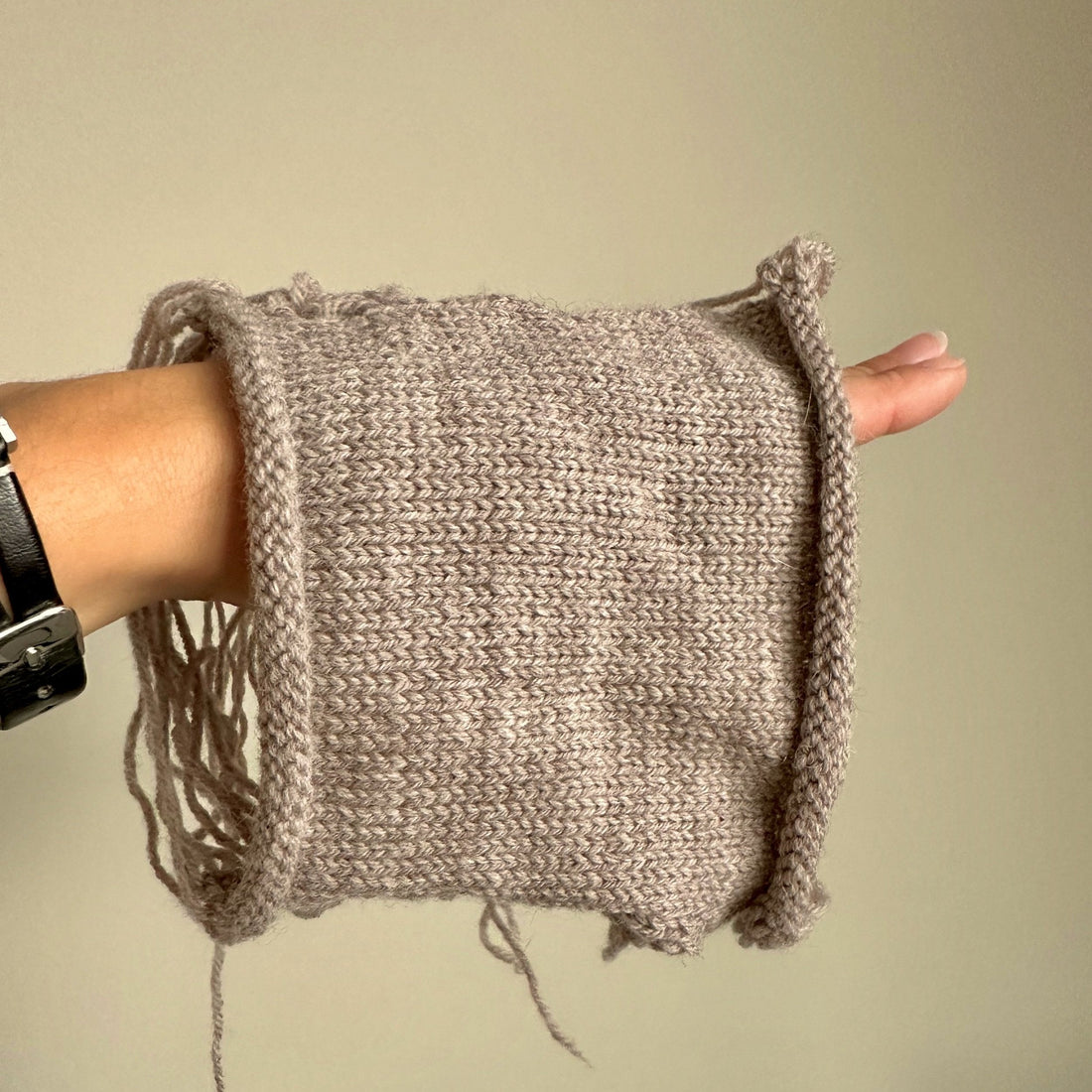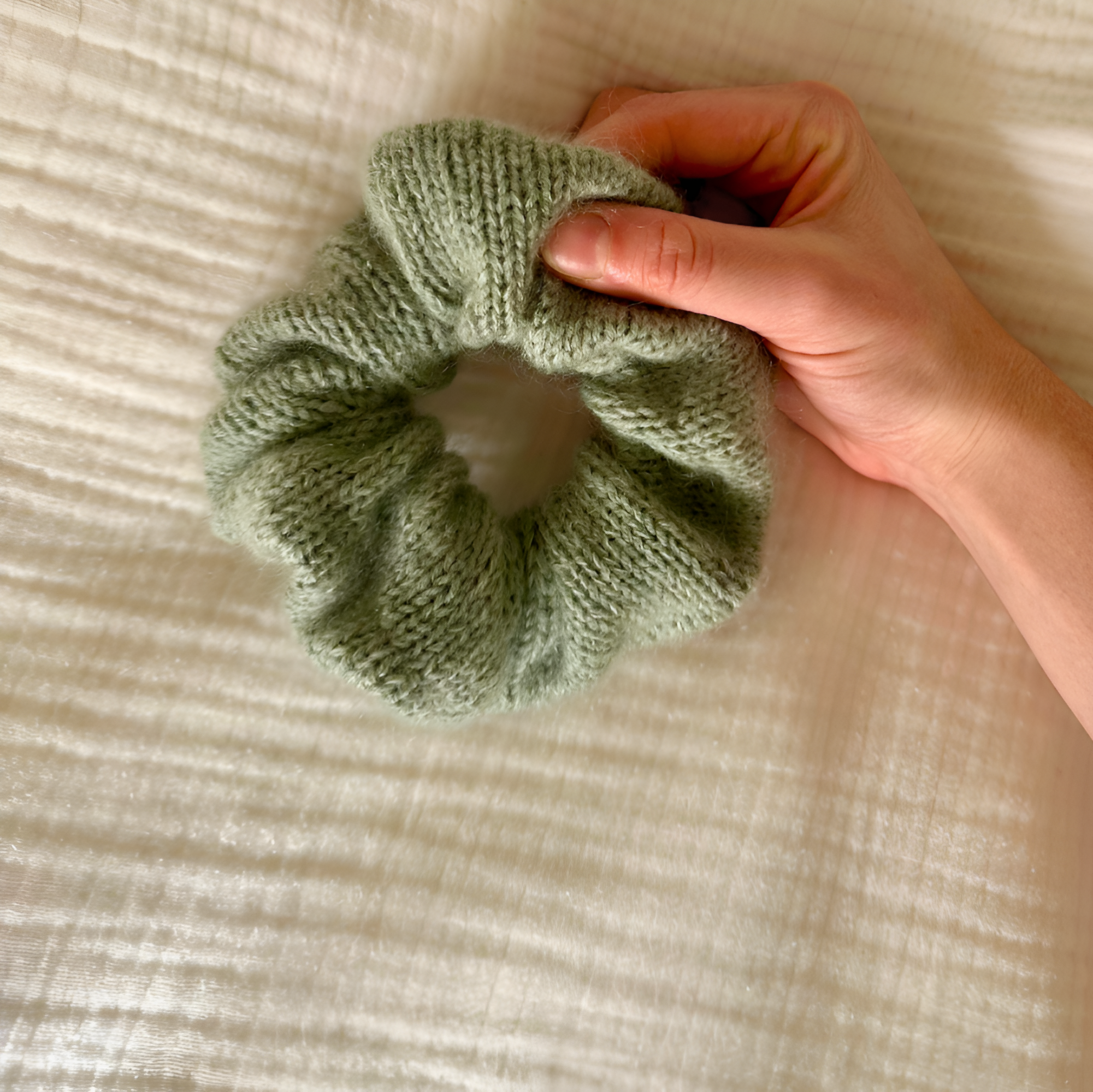You packed away your cozy winter knits with care, and now spring is here! Time to grab some fresh, colorful yarn. But wait... why does your dream spring sweater look more like a warped beach towel rather than a properly fitting piece?
Been there, frogged that (let's be honest, multiple times!). The secret to nailing those breezy spring knits isn't just about the pattern. It's all about understanding yarn weight and gauge. And once you have a better understanding of these two essential parts of knitting, you’ll want to be wearing your spring knits all year long.
Please note that this blog post contains affiliate links. If you make a purchase after clicking one of these links, I earn some yarn money at no extra cost to you!

Yarn Weight
Imagine yarn weight like your fabric stash for sewing. You wouldn't use silk for a winter coat, right? Same goes for yarn. It comes in a spectrum, from whisper-thin threads to the chunky ones, each perfect for different projects. Here's a quick guide to get you started:
Lace Weight (0 or 1 ply)
Picture cobwebs spun from pure luxury. This weight is all about delicate shawls and scarves. Think springtime elegance, not bulky sweaters.
Fingering Weight (2 or 3 ply)
Want to knit up something light and breezy? Give fingering weight yarn a try! Great for socks (check out my staple sock pattern that let’s you use any yarn!), intricate colorwork projects, and those delicate, floaty garments.
Sport Weight (4 ply)
If you’re looking for a light yarn but don’t want to fiddle with fingering weight yarn, try sport weight yarn instead! Perfect for baby clothes, lightweight sweaters, and comfy accessories. Sport weight is a great choice for beginners because it's easier to handle than super fine yarns and lets you see your project progress more quickly.
DK Weight (Light Worsted, 8 ply)
The ultimate all-rounder. Sweaters, cardigans, hats – DK weight can do it all! DK weight is just fantastic for spring knits because it offers a perfect balance between warmth and drape. Perfect for those days with unpredictable weather!
Get 10% off with code NEWWAVEKNITTING

Worsted Weight (Aran, 10 ply)
Think sturdy sweaters, cozy blankets, and those super warm accessories. Imagine a giant hug in yarn form! While not the lightest option, worsted weight is amazing for those who need something a little warmer or to stay cozy on cool spring and summer nights.
Bulky Weight (12 ply & above)
Bold and chunky, bulky weight yarns are perfect for quick knits, statement pieces, and those super-warm accessories. Bulky weight yarn is my go-to for when I want to knit something up fast, like chunky hats and scarves. However, I don’t reach for bulky yarn much during the spring.
If you’re still unsure what yarn weight to use for your next project, here’s a helpful guide that has everything you need to know about yarn weights, types, corresponding knitting needle sizes plus common projects for each category!👇🏻

Gauge: The Rhythm of Your Knitting
Gauge refers to the number of stitches and rows in a specific area (usually 4" or 10cm) of your knitting. It's the rhythm that dictates the final size and drape of your project. Here's why gauge matters:
Fit: Knitting gauge ensures your garment fits the way it's supposed to. No more beach towel sweaters or doll clothes!
Pattern: Most patterns are written with a specific gauge in mind. So, always (ALWAYS) begin by checking the pattern. Matching gauge guarantees your project matches the intended size and design. And if your pattern let’s you use any yarn and any gauge (like mine!), then I recommend referring to your yarn label for what gauge is best for the yarn you’re working with.
Fabric: Gauge influences the drape and texture of your finished piece. A tighter gauge creates a denser fabric, while a looser gauge results in an airier piece with more drape. One of the things I love about knitting is that there is no right or wrong type of fabric. Play with your yarn and needles until you get a fabric you like! Or if you're working with a pattern that has a set gauge, you’ll want to replicate the fabric the designer achieved.
The Key to Flawless Spring Knits
Now that you understand yarn weight and gauge, let's translate that knowledge into stunning spring knits!
Swatch It Out! This is the golden rule. Before diving into your project, knit a gauge swatch using the yarn and needles recommended in the pattern. The swatch allows you to test the gauge and ensure your finished project will have the intended size and drape. Wash and block the swatch to mimic the finished project and according to the pattern's care instructions. Blocking relaxes the stitches and reveals the fabric's true drape, essential for accurate gauge measurement.
-
Needle Size is Key: If you’re working to achieve a specific gauge, the pattern’s recommended needle size is a fantastic starting point, not a hard rule. Remember, gauge is the holy grail, not the needle size itself. If you’re working with a pattern that let’s you use any gauge, start with the yarn label’s recommended needle size. Once your swatch is washed and blocked, measure the number of stitches and rows in a 4" or 10cm square (as specified in the pattern). Now, did your stitch gauge come out a bit too loose (fewer stitches per inch than the pattern calls for)? Grab a smaller needle size! Conversely, if your gauge is too tight (more stitches per inch), go up a needle size.
Also read: How to Achieve a Super Accurate Gauge Swatch + Troubleshooting Gauge
Pro Tip: Make small needle size adjustments (half a size at a time) and knit new swatch sections to ensure you achieve the exact gauge.
Bonus Tips:
Relax!: Tension can be affected by stress, which can also be the culprit affecting your gauge. Remember to breathe and avoid holding the yarn and needles tightly. Uptight knitting leads to a tight gauge (fewer stitches per inch) and a potentially shrunken final project.
Consistency is Key: Aim for consistent tension throughout your knitting. This means maintaining a similar tightness with each stitch. Inconsistent tension can lead to uneven gauges and a wonky finished piece.
Practice Makes Perfect: Don't get discouraged if you don't nail the gauge right away. Keep practicing, and you'll be a gauge master in no time!
Mind Your Yarn: Different yarn types can affect gauge. For example, wool yarns tend to be more elastic and may require a slightly smaller needle size compared to cotton yarns of the same weight. Cotton, on the other hand, is a really great fiber choice for spring and summer though it can be a bit trickier to work with. It can be slippery and less forgiving of tension mistakes. But, no worries! To make sure your spring knits are as cute as can be, I have the complete guide on knitting with cotton yarn. Now, to really embrace the lighter, brighter, and more colorful fibers of spring, check out the Best Yarns for Spring Knitting!
Read Up and Experiment: Don't be afraid to research "gauge troubleshooting" online. Many resources offer solutions for specific gauge issues. Remember, practice makes perfect! The more you swatch and experiment with needle sizes, the more comfortable you'll become with achieving gauge.
Swatch with Similar Needles: If you plan to use interchangeable needles for your project, make sure you swatch with the full set of connected needles you'll be using. This ensures consistent tension throughout your project.
Conquering yarn weight and gauge might seem daunting at first, but trust me, it's a skill that will pay off in spades. Once you understand this essential duo, you'll be a spring knitting pro! Remember, knitting is all about having fun and creating something you love. Don't be afraid to experiment with different yarn weights and gauges to see what works best for you. And hey, if your first swatch doesn't match the gauge perfectly, no worries! That's what swatching is for – practice makes perfect. Ready to put your new skills to the test? Grab your favorite spring-colored yarn, cast on some stitches, and get ready to knit some beautiful projects that fit you just right! Plus, to help you stay organized and conquer even more spring knits, snag your FREE Knitting Gauge Tracker and Project Log! It's packed with goodies to keep track of your gauge swatches, and project details, and even offers cool insights into your knitting habits.
Get the FREE Knitting Gauge and Project Log now
Do you have any tips on how to achieve flawless spring knits? What do you plan on knitting this spring? Have any questions? Share your thoughts in the comments below!


